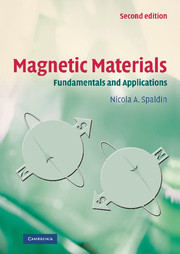14 - Exchange bias
from II - Magnetic phenomena
Published online by Cambridge University Press: 05 June 2012
Summary
ExchangeThe act of giving or taking one thing in return for another
BiasAn inclination of temperament or outlook
Merriam-Webster DictionaryIn Chapter 8 we described the original 1956 experiment on Co/CoO nanoparticles in which the shift in hysteresis loop known as exchange bias or exchange anisotropy was first observed. The goal of this chapter is to describe the exchangebias phenomenon in more detail and to point out open questions in the field, which remains an active area of research. Significantly, a simple theoretical model that accounts for all experimental observations is still lacking.
Remember that exchange bias appears when a ferromagnetic/antiferromagnetic interface is cooled in the presence of a magnetic field through the Néel temperature of the antiferromagnet (Fig. 14.1). The Curie temperature of the ferromagnet should be above the Néel temperature of the antiferromagnet so that its moments are already aligned in the field direction; this is usually the case for typical FM/AFM combinations. In a simple model, the neighboring moments of the antiferromagnet then align parallel to their ferromagnetic neighbors when their Néel temperature is reached during the field cooling process. An exchange-biased system shows two characteristic features: first, a shift in the magnetic hysteresis loop of the ferromagnet below the TN of the AFM, as though an additional biasing magnetic field were present, resulting in a unidirectional magnetic anisotropy; and second, an increase in coercivity and a wider hysteresis loop, which can even occur independently of the field cooling process.
- Type
- Chapter
- Information
- Magnetic MaterialsFundamentals and Applications, pp. 169 - 174Publisher: Cambridge University PressPrint publication year: 2010
- 1
- Cited by



